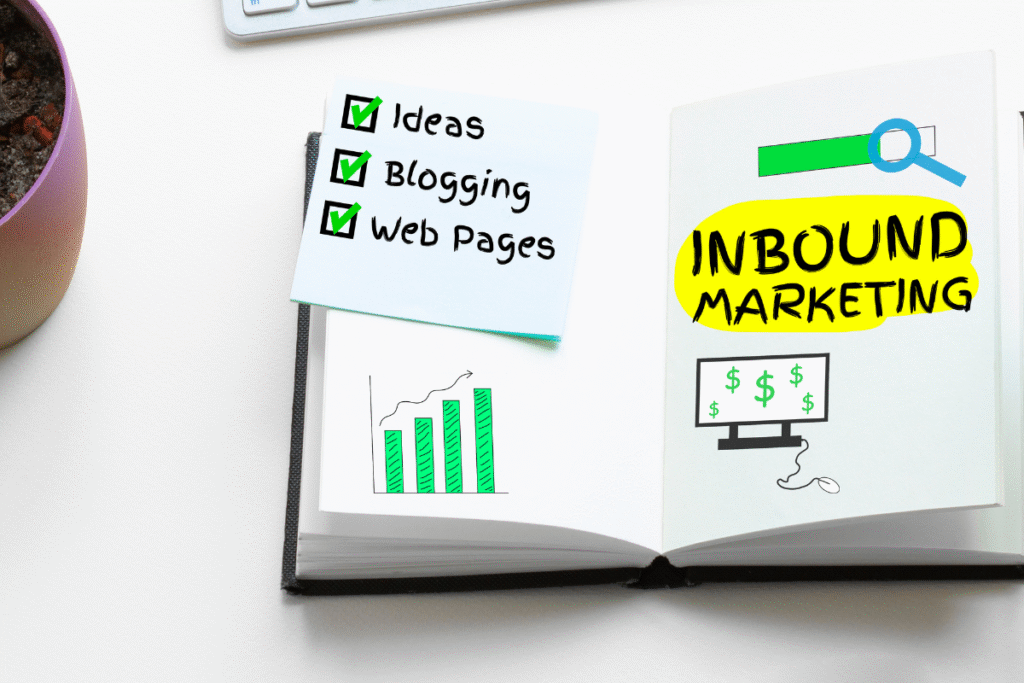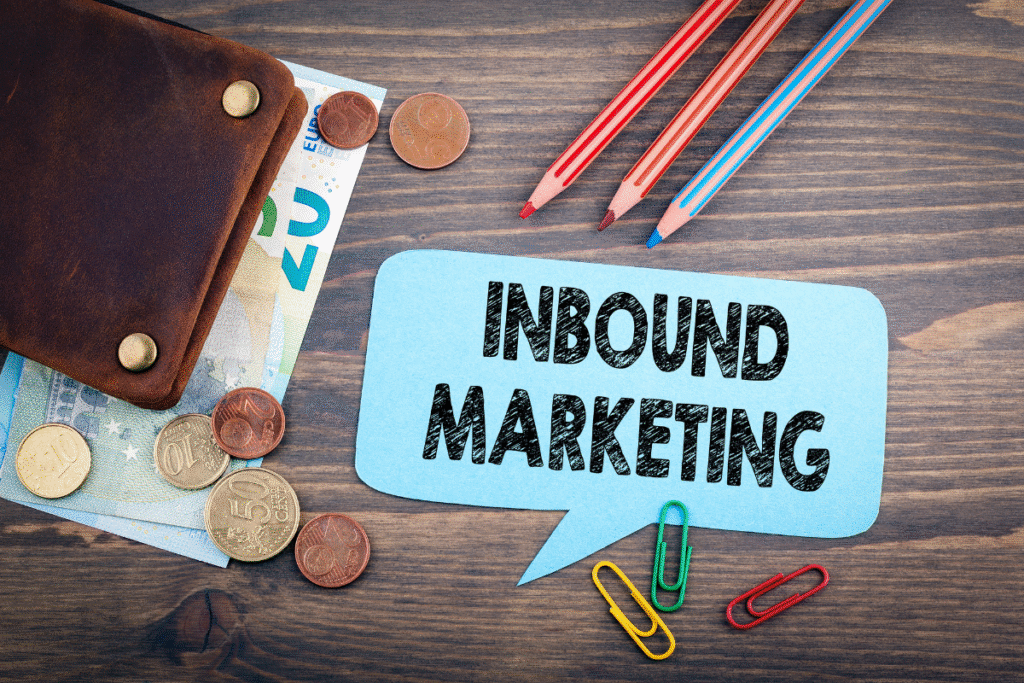Small B2B companies need leads that turn into sales. But many don’t know which marketing works best. Should they use inbound tactics or outbound outreach?
Have you ever been tasked with establishing or upgrading your company’s marketing strategy? Whether you should adopt an inbound or outbound marketing approach may be a frequent argument you hear while discussing forthcoming project initiatives.
Fortunately, these two universal marketing concepts can help you narrow your reach. Both have various applications, benefits and obstacles, which we’ll discuss in this post, along with an overview of them and examples of how to implement each strategy.
Guiding your clients in the right direction is a cornerstone of your agency’s success. But in the sea of infinite marketing methods, it’s easy to get caught up attempting to do too much all at once!
How can you confidently offer the optimal approach to your clients, whether an inbound strategy that establishes trust, an outgoing strategy that provides visibility for a broader audience, or a balance of both?
In this post, we’ll discuss the benefits and cons of inbound and outbound marketing and present a step-by-step framework for picking the right technique for each customer. Use these information to generate informed strategy recommendations that maximize results and demonstrate your agency’s worth.
Key Takeaways:
- Inbound builds trust through content. Outbound delivers fast reach.
- Both methods work best when used together.
- Choose based on budget, timelines, and your buyer’s behavior.
What Is Inbound Marketing?

Inbound marketing attracts customers using helpful content. Inbound is about pulling prospects toward your brand. You create useful content—blogs, ebooks, case studies—that people seek.
Then they find you, subscribe, or request more info. It’s a gentle, trust-based path to lead generation.
How Inbound Works
- Post helpful blogs that answer customer questions.
- Add SEO so people can find your content.
- Offer lead magnets like templates or guides.
- Nurture prospects with targeted email sequences.
Inbound Marketing Benefits
Here are some of the benefits of inbound marketing:
- Generates Strong Leads: According to UserGuiding, inbound marketing is 10 times more effective at converting leads than outbound techniques. That’s because an inbound methodology openly gives great content to potential customers, leaving the decision to take action up to them. By the time prospects decide to take action, they arrive with pre-determined interest and brand awareness.
- Builds Trust and Authority: Consistently providing high-value inbound marketing content provides your clients the chance to become authoritative leaders in their industry. A good reputation creates prospects for collaborative partnerships with other industry players, consolidating the client’s traction in the market.
- Easier to Track: Inbound marketing efforts are founded in digital marketing software like Google Analytics, HubSpot, and CRM systems. These tools help your team to monitor KPIs like traffic sources, conversion rates, and time on site to offer clear insights on ROI.
Inbound Marketing Challenges
- Requires Content Creation Expertise: Success in inbound marketing relies significantly on high-quality, relevant content. This takes experienced writers, designers, and strategists and a persistent commitment to publishing. In saturated markets, standard inbound approaches aren’t enough to stand out. Advanced SEO methods, such as technological optimizations and focused backlink creation, often become necessary, adding complexity and cost.
- ROI Takes Time: Inbound marketing is a long game. Inbound activities like blog entries, SEO, and social network posts sometimes take months—or even years—to generate momentum.
What Is Outbound Marketing?
Outbound marketing reaches out to prospects directly. Outbound uses ads, cold calling, direct mail, and email outreach. Instead of waiting, you go to your audience. You decide who you target, where they’ll see your message, and when.

Outbound marketing transmits a message to a huge amount of people, with the aim of making a transaction. This method is built in the thought that the larger the group you message to, the larger the return.
How Outbound Works
- Run LinkedIn or Google Ads to targeted companies.
- Send personalized cold emails to decision-makers.
- Make phone calls to qualified leads.
- Attend industry events and trade shows.
Oftentimes, consumers are unaware of or not even looking for the actual product being advertised. Prospects could be watching a television show, looking at a web site, and be interrupted by an advertisement explaining why they must purchase something.
Benefits of outbound marketing
Outbound marketing has several positive factors that are worthy of consideration.
- Generates brand awareness: Contact people who have never heard of your products or services before.
- Can provide quick results. Those interested in your products and services will likely act on your advertisements and purchase from you.
- Is something your audience is familiar with: They understand that viewing advertisements in Sunday newspapers, or TV commercials is to be expected, and do rely on those advertisements more than on ones thrown to them by modern technology.
- Promotes brand awareness: Reach folks who haven’t heard of your products or services before.
- Can give immediate results: People interested in your products and services are likely to take action on your adverts and make a purchase.
- Is something consumers are used to: They know that there will be commercials in the Sunday paper or on TV and may trust those ads more than the ones offered to them on modern technology.
Drawbacks of outbound marketing
Outbound marketing can be difficult to execute well. Here are some disadvantages to consider when going this route:
- Outbound marketing is less targeted: It’s hard to make outbound marketing work for every potential customer.
- It’s easy for customers to ignore outbound marketing: Many people simply mute the TV for commercials or just throw away or recycle their junk mail.
- It’s difficult to measure the results: It’s challenging to measure the success (or failure) of many forms of outbound marketing such as billboards.
Inbound vs. Outbound: Side-by-Side Comparison
There are several fundamental contrasts between inbound and outbound marketing. Outbound marketing is proactively reaching out to consumers to get them interested in a product. By comparison, inbound marketing relies on developing and distributing content that draws users inside your website.
Outbound marketing often takes a more aggressive, wide-sweeping approach, with the assumption that at least some people will convert. Inbound marketing is usually more subtle and focused on encouraging a particular set of consumers to make a purchase over time.
| Feature | Inbound | Outbound |
| Approach | Pulls prospects in | Pushes messages out |
| Time to Results | Takes time to build | Delivers results fast |
| Cost per Lead | Lower over time | Higher per outreach |
| Targeting | Broad, SEO-driven | Precise, based on profiles |
| Lead Quality | High-quality, interest-based | Mixed quality, based on outreach |
| Brand Visibility | Builds over time | Instant visibility |
Outbound wins for time-sensitive campaigns. Inbound wins for lasting credibility and lower costs.
When to Use Inbound for B2B
Best Conditions:
- Selling complex services or software
- Longer sales cycles (months)
- Content can educate and build authority
Tactics:

- Write “how‑to” guides and industry tips
- Use SEO to rank for niche queries
- Offer gated assets like templates or reports
- Create webinars and success story videos
When to Use Outbound for B2B
Best Conditions:
- Urgent targets or growth goals
- Specific industries or account types
- Launching new offerings
Tactics:
- Use LinkedIn Ads targeting job titles
- Send personalized cold emails
- Attend trade shows and network
- Split test subject lines and messaging
How to Combine Inbound and Outbound
- Use outbound to get immediate visibility
- Run inbound for long-term lead growth
- Drive outbound ads to inbound content
- Use inbound content in email outreach
How to Choose What’s Right for You
Factors to Consider:
- Budget: Inbound is cheaper over time
- Timeline: Outbound is faster
- Target audience: Where they spend time
- Resources: Can you create content consistently?
Quick Checklist:
- Need fast results? Outbound
- Need long-term growth? Inbound
- Can you create useful content? Inbound
- Can you call or email decision-makers? Outbound
Tools and Channels Overview
| Channel | Inbound Use | Outbound Use |
| Blog | SEO content, inbound lead capture | Shared in outbound emails |
| Articles, engagement, SEO | Ads, cold outreach | |
| Lead nurturing | Cold outreach campaigns | |
| SEO | Organic traffic | Supporting outreach |
| PPC Ads | Promote content | Direct lead generation |
| Webinars | Authority-building | Hybrid: ads + invites |
FAQs
1. Is inbound marketing better than outbound marketing?

They work best when used together. Use outbound for fast results, inbound for long-term growth.
2. How long does inbound marketing take to work?
You may see results in 3–6 months. SEO and content need time to rank.
3. How much should a small B2B business spend on ads?
Try a small test budget first ($500–$1,000/month). Scale if ROI is strong.
4. Can inbound replace outbound marketing?
Not always. But if your time horizon is long, you can lean heavily on inbound.
5. What’s the best content format for B2B inbound?
Try long-form guides, case studies, and checklists. Add SEO and gated offers.
Final Thoughts
Inbound and outbound are two sides of the same coin. One builds trust over time. The other gets fast results. Small B2B businesses should start with both. Use outbound for early traction. Start inbound to scale long-term.
Over time, shift the budget toward inbound sustainable growth. Reviewed regularly, this balanced system will bring predictable and cost-effective leads.